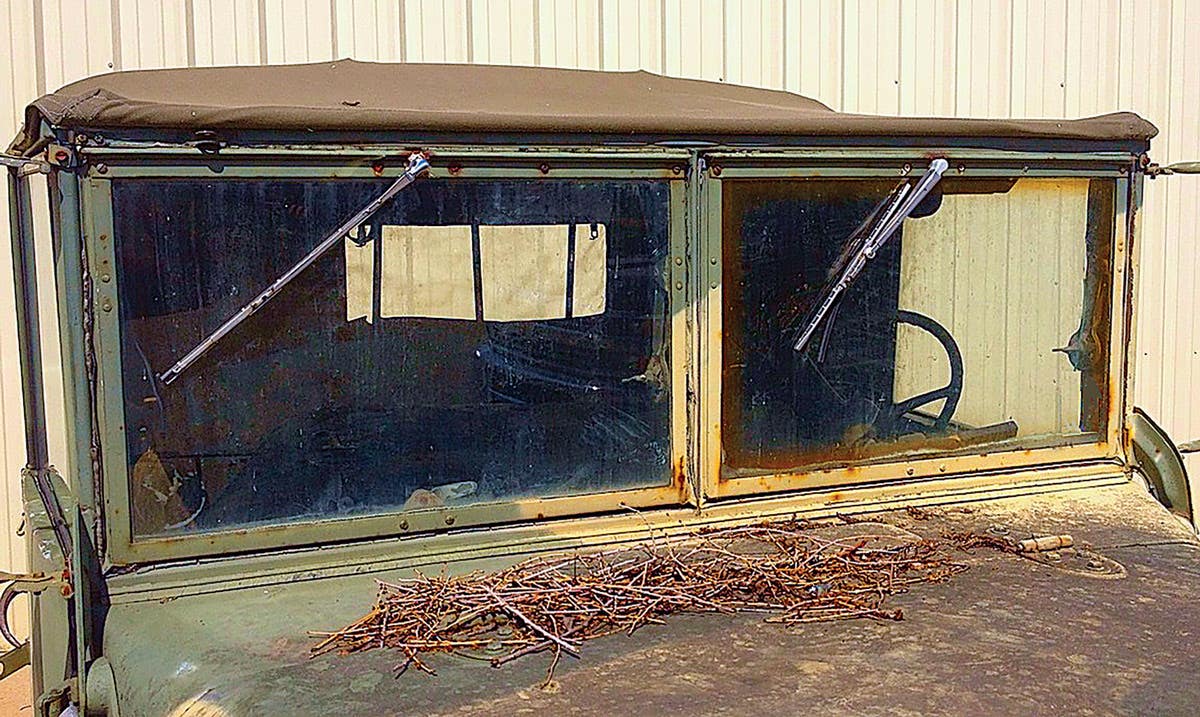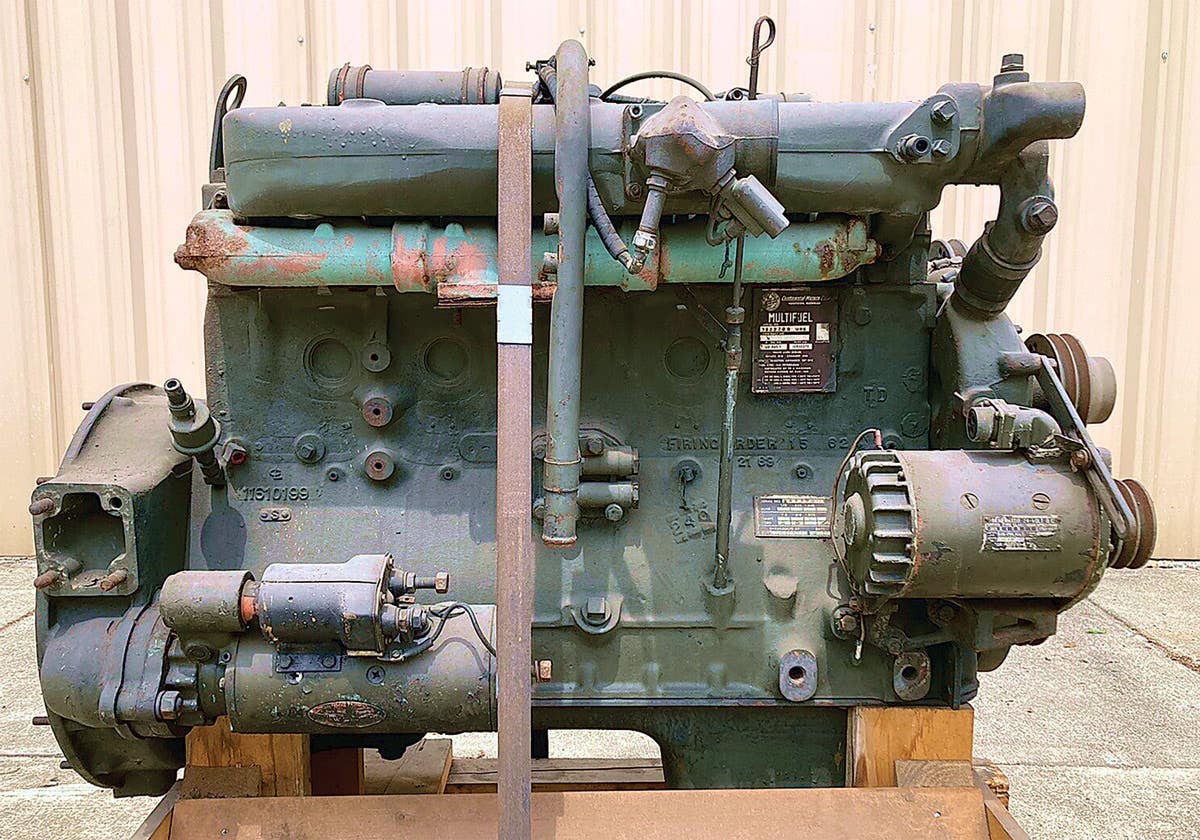U.S. Army Awards M1A1 Upgrade into M1A2 SEP(V2)
General Dynamics Land Systems is developing further upgrades proposed for the Continuous Electronics Enhancement Program (CEEP) building on the latest System Enhancement Package (SEP) and Tank Urban Survivability Kit (TUSK) configurations of M1A1 and M1A2 main battle tanks.
General Dynamics Land Systems is developing further upgrades proposed for the Continuous Electronics Enhancement Program (CEEP) building on the latest System Enhancement Package (SEP) and Tank Urban Survivability Kit (TUSK) configurations of M1A1 and M1A2 main battle tanks.
CEEP incorporates advanced digital systems improving the fighting capability of the crew, and ensuring compatibility with the standards to be implemented by the Army's future combat systems. CEEP will be introduced as a retrofit into current SEP models. The upgrades will include advanced displays showing color maps, sensor imagery and situational pictures. The systems will support wireless technologies to enable remote diagnostics, vehicle monitoring and dismounted command and control. Individual displays will be introduced to all crew members, improving intra-vehicular connectivity. The tank will be equipped with a new battery system, extending the silent watch capability and eliminating the need for an auxiliary power unit.
The M1A2 System Enhancement Package (SEP V1) was introduced as part of a continuous upgrade path for M1A2 tanks. The kit introduced an armor enhancement in the form of a monolithic and composite armor, and compartmented storage for fuel and ammunition. The turbine engine was improved, to become true multi-fuel system. It uses digital control for optimal operation. The Auxiliary Power Unit (APU) was moved under armor, protecting the tank's power supply when at static positions.
The tank is fitted with second generation thermal imaging systems for the commander's independent viewer (CITV) and gunner. The sight is fully stabilized, enabling fire on the move capability in day or night. The driver has a wide-field-of-view thermal imager for driving. Vetronics systems include enhanced GPS and inertial position/navigation system, driving a color, digital terrain map display. Radios include SINCGARS and Enhanced Position/Location Reporting System (EPLRS) supporting tactical situational picture via the FBCB2 system. To improve maintenance, the tank is equipped with on-board malfunction detection system. In November and December 2006 The U.S. Army Tank-Automotive and Armaments Command awarded GDLS several contracts worth over US$800 million for M1A2SEP reset work, starting 2007 through 2009.
The Abrams Improved SEP (SEP V2) Reset program applies lessons learned from recent M1A2 Abrams SEP reset efforts and aims to bolster the reliability and durability of tanks emerging from the reset process. SEP V2 includes improved displays, sights, power, and a tank-infantry phone. It represents the most technologically advanced Abrams tank and can accommodate future technology improvements to ensure compatibility with the Army's Future Combat Systems.
The First SEP V2 contract included $27 million of funding for the reset and upgrade of 72 M1A2 SEP Abrams tanks to be processed at General Dynamics employees in Anniston, Ala.; Tallahassee, Fla.; Lima, Ohio; Sterling Heights, Mich.; and Scranton, Pa. between February and October 2007. Additional $278 million are set for long-lead material procurement for the reset and upgrade of additional 240 tanks in 2008-2009. The program was initiated with a $46 million long-lead material award in July 2006 for the first 72 tanks. In November 2007 the Army awarded additional $89 for additional upgrades. The second award covered work on 240 tanks to be completed by 2009.
I n February 2008 General Dynamics Land Systems was awarded a first order, under a new multi-year upgrade modernization of 435 M1A1 Abrams main battle tanks into M1A2 Systems Enhancement Package (SEP) Version Two (V2) configuration. The first increment of this multi-year contract is valued at $39 million, funding upgrades for 20 M1A1 Abrams tanks. An earlier $12.4 award announced in January million funded parts for this upgrade. The newly awarded contract will complete the modernization of all remaining M1A1 tanks, expected to maintain the backbone of the U.S. Army's heavy force in the next decades.
M1A2 tank - Specifications
Weight: 69.54 tons
Length (gun forward): 287"
Turret height: 93.5"
Width: 144"
Ground clearance: 19"
Ground pressure: 15.4 psi
Crew: 4
Power: Gas turbine engine, 1,500 hp
Power/weight ratio: 21.6 hp/ton
Hydro-kinetic transmission: 4 F / 2 R
M1A2 Tank - Basic performance
Maximum Speed (governed): 42 mph
Cross-country speed: 30 mph
10% slope: 17 mph
60% slope: 4.1 mph
Acceleration (0-32 mph): 7 seconds
Cruising range: 265 miles
Vertical obstacle: 42"
Trench crossing: 9 feet
NBC System: 200 SCFM-clean cooled air
Auxiliary power unit: 25,600 BTU/hr cooling, 6kw electrical, 14 kw hydraulic
M1A2 Tank - Armament
Main armament: 120mm XM256 smooth bore cannon
Coaxial gun: 7.62 M240 machinegun on skate mount
Commander's weapon: .50 cal. M2HB
Deployment
The M1A1/2 Abrams main battle tank is manufactured by General Dynamics Land Systems (GDLS). The first M1 tank was produced in 1978, the M1A1 in 1985 and the M1A2 in 1986.
3,273 M1 tanks were produced for the US Army. 4,796 M1A1 tanks were built for the US Army, 221 for the US Marines and 880 co-produced with Egypt.
77 M1A2 tanks have been built for the US Army, 315 for Saudi Arabia and 218 for Kuwait. For the M1A2 upgrade program, over 600 M1 Abrams tanks are being upgraded to M1A2 configuration. Deliveries began in 1998.
In March 2004, the Australian Army announced the purchase of 59 US Army M1A1 tanks to enter service from 2007. The contract was signed in November 2005 and the first five were handed over in February 2006 at GDLS in Lima, Ohio. The first 18 tanks were delivered to the Australian Army at the School of Armour in Victoria in September 2006. The remaining 41, to be based in Darwin, were delivered in March 2007.
I n June 2006, Saudi Arabia requested the foreign military sale of 58 M1A1 tanks and the upgrade of these and the 315 M1A2 already in the Saudi inventory to M1A2S configuration. The upgrade involves rebuilding to a 'like new' condition, similar to the US Army Abrams Integrated Management Program (AIM).
In August 2007, Egypt requested the foreign military sale of an additional 125 M1A1 tanks, which would bring the country's fleet to 1,005 M1A1 tanks.







